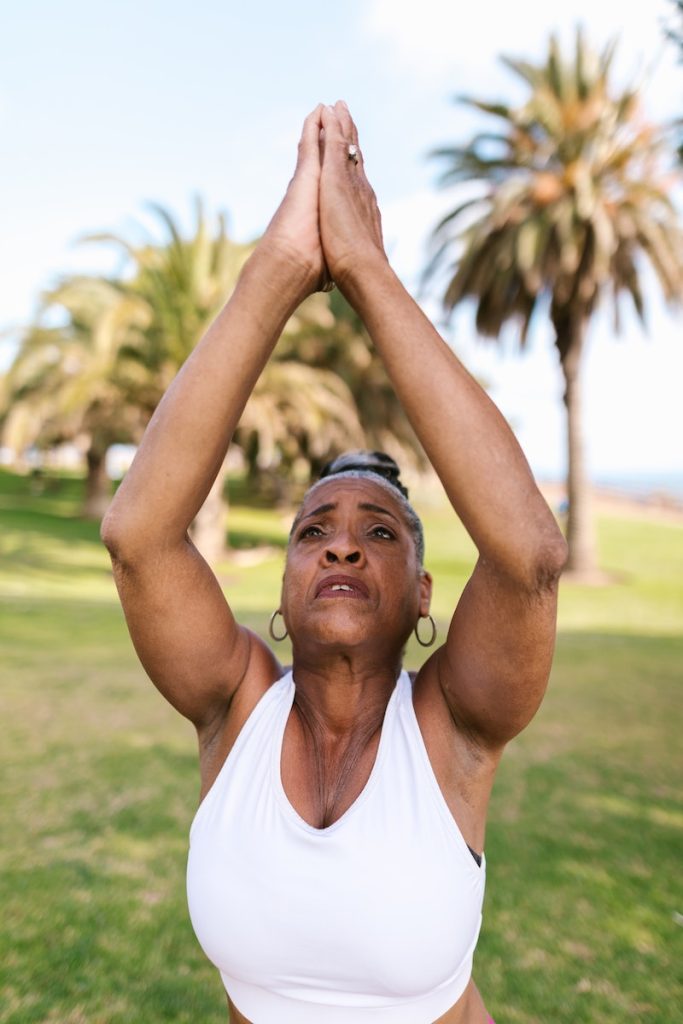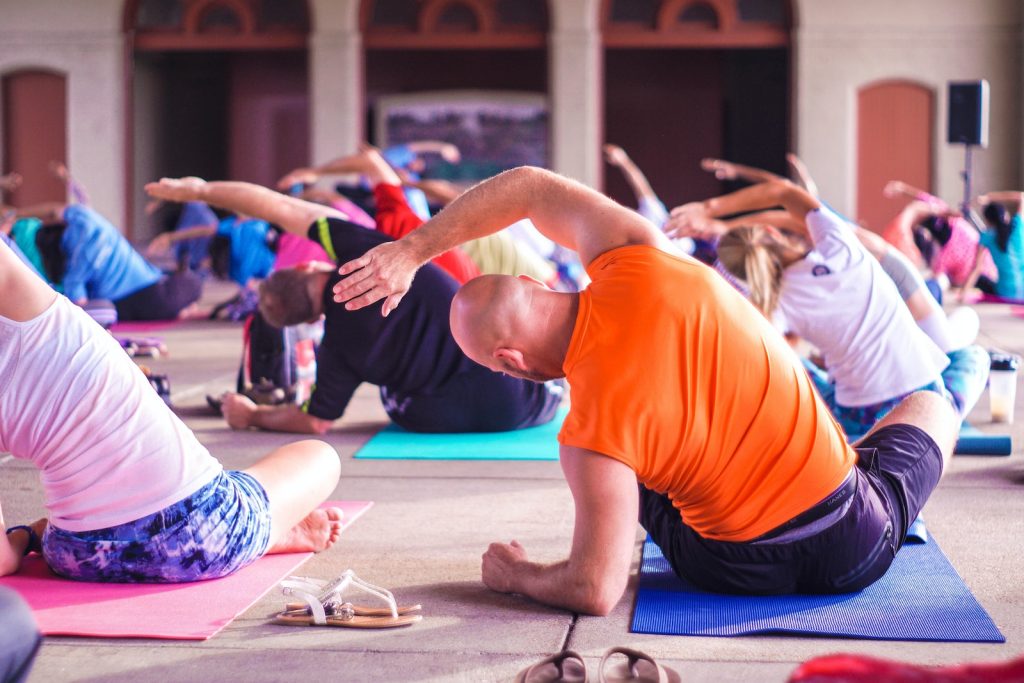Yoga is a practice that has been around for thousands of years, but in recent years it has become increasingly popular among seniors. Many people assume that yoga is only for the young and flexible, but this could not be further from the truth. In fact, yoga can be an excellent way for seniors to improve their overall health and wellbeing.

One of the main benefits of yoga for seniors is that it can help to improve flexibility and balance. As we age, our bodies naturally become less flexible, which can increase the risk of falls and other injuries. However, by practicing yoga regularly, seniors can improve their range of motion and balance, which can help to reduce the risk of falls and other accidents. Additionally, yoga can help to improve strength, which can also help to prevent injuries and improve overall health.
The Rise of Yoga for Seniors

Yoga has been around for thousands of years and has been practiced by people of all ages. However, in recent years, there has been a rise in the popularity of yoga among seniors. This is due to the many benefits that yoga can provide for seniors, including improved flexibility, balance, and overall well-being.
Historical Context
Yoga has its roots in ancient India and has been practiced for thousands of years. It was originally developed as a way to achieve spiritual enlightenment, but over time, it has evolved into a form of exercise that can benefit both the body and mind. Yoga has become increasingly popular in the West over the past few decades, and it is now practiced by millions of people around the world.
Current Popularity
In recent years, there has been a surge in the popularity of yoga among seniors. This is due in part to the fact that many seniors are looking for ways to stay active and healthy as they age. Yoga provides a low-impact form of exercise that can be done by people of all fitness levels.
Another reason for the rise in popularity of yoga among seniors is that many yoga studios and fitness centers now offer classes specifically designed for seniors. These classes often focus on gentle stretching and breathing exercises that can help improve flexibility, balance, and overall well-being.
In addition to the physical benefits, yoga can also provide mental and emotional benefits for seniors. Many seniors find that practicing yoga helps them to reduce stress and anxiety, improve their mood, and increase their overall sense of well-being.
Overall, the rise in popularity of yoga among seniors is a positive trend that can help seniors to stay healthy and active as they age.
Benefits of Yoga for Seniors

Yoga is a popular form of exercise for people of all ages, but it can be especially beneficial for seniors. Here are some of the benefits of practicing yoga as a senior:
Physical Health
Yoga can help seniors maintain their physical health in a number of ways. First, it can help improve flexibility and balance, which can reduce the risk of falls and other injuries. Additionally, yoga can help seniors build strength and improve their cardiovascular health.
Here are some specific ways that yoga can benefit seniors physically:
- Improved flexibility: Yoga poses can help seniors improve their flexibility, which can make it easier to perform everyday activities like bending down to tie their shoes or reaching up to grab something from a high shelf.
- Better balance: Many yoga poses require a great deal of balance, which can help seniors improve their balance and reduce their risk of falls.
- Increased strength: Yoga poses can help seniors build strength in their muscles, which can make it easier to perform everyday tasks and reduce the risk of injury.
- Improved cardiovascular health: Certain types of yoga, like vinyasa or power yoga, can provide a cardiovascular workout that can help improve heart health and reduce the risk of heart disease.
Mental Wellbeing
In addition to physical benefits, yoga can also have a positive impact on seniors’ mental wellbeing. Practicing yoga can help seniors reduce stress and anxiety, improve their mood, and increase their overall sense of wellbeing.
Here are some specific ways that yoga can benefit seniors mentally:
- Reduced stress and anxiety: Yoga incorporates breathing exercises and meditation, which can help seniors reduce stress and anxiety and improve their overall mental health.
- Improved mood: Yoga can help seniors feel more relaxed and calm, which can improve their mood and reduce feelings of depression.
- Increased sense of wellbeing: Practicing yoga can help seniors feel more connected to their bodies and improve their overall sense of wellbeing.
Overall, yoga can be an excellent form of exercise for seniors. It can help improve physical health, mental wellbeing, and overall quality of life.
Types of Yoga Suitable for Seniors

If you’re a senior looking to start practicing yoga, it’s important to choose a type of yoga that is suitable for your needs and abilities. Here are three types of yoga that are particularly well-suited for seniors:
Hatha Yoga
Hatha yoga is a gentle form of yoga that emphasizes slow, controlled movements and deep breathing. It’s a great choice for seniors who want to improve their flexibility, balance, and overall well-being. Hatha yoga classes typically include a mix of standing and seated poses, as well as relaxation and meditation.
Chair Yoga
Chair yoga is a modified form of yoga that is done while sitting in a chair or using a chair for support. It’s a great option for seniors who have limited mobility or balance issues. Chair yoga can help improve flexibility, strength, and range of motion, and can also help reduce stress and anxiety.
Restorative Yoga
Restorative yoga is a deeply relaxing form of yoga that involves holding gentle poses for extended periods of time. It’s a great choice for seniors who want to reduce stress and improve their overall sense of well-being. Restorative yoga classes typically use props like blankets, bolsters, and blocks to support the body in various poses.
No matter which type of yoga you choose, it’s important to listen to your body and only do what feels comfortable and safe for you. Remember to breathe deeply and stay present in the moment, and you’ll be well on your way to experiencing the many benefits of yoga for seniors.
Overcoming Challenges in Practicing Yoga

Yoga is a great way for seniors to stay active and improve their overall health. However, practicing yoga can be challenging for some seniors due to physical limitations, health conditions, and safety concerns. Here are some tips for overcoming these challenges and practicing yoga safely.
Adapting Yoga Poses
One of the biggest challenges for seniors practicing yoga is adapting the poses to their physical abilities. Fortunately, there are many modifications that can be made to make the poses more accessible. For example:
- Use props such as blocks, straps, and blankets to help support your body and make the poses more comfortable.
- Modify the poses by doing them seated or with a chair for added support.
- Take breaks and rest when needed.
It’s important to listen to your body and not push yourself too hard. If a pose feels uncomfortable or painful, modify it or skip it altogether.
Safety Considerations
Safety is a top priority when practicing yoga, especially for seniors. Here are some safety considerations to keep in mind:
- Consult with your doctor before starting a yoga practice, especially if you have any health conditions or injuries.
- Choose a qualified yoga instructor who has experience working with seniors.
- Avoid poses that put too much strain on the joints or require balancing on one foot.
- Stay hydrated and take breaks as needed.
- Use caution when getting up from the floor to avoid falls.
By adapting poses and practicing safely, seniors can enjoy the many benefits of yoga, including improved flexibility, balance, and overall well-being.
Success Stories

Yoga is a low-impact exercise that can be easily tailored to meet the needs of seniors. Here are a few success stories of seniors who have incorporated yoga into their lives:
- Mary: Mary suffered from arthritis and found it difficult to move around. After starting yoga, she noticed a significant improvement in her flexibility and joint pain. She now attends yoga classes twice a week and is able to do things she never thought possible.
- John: John was feeling isolated and lonely after retiring. He decided to try yoga as a way to meet new people and stay active. Not only did he make new friends, but he also noticed an improvement in his balance and overall well-being.
- Evelyn: Evelyn had a fear of falling after experiencing a few close calls. She started taking yoga classes that focused on balance and stability, and she became more confident in her movements. She now feels more secure and less anxious when walking or doing other activities.
These success stories are just a few examples of the benefits that yoga can provide for seniors. With its gentle movements and focus on mindfulness, yoga can help seniors stay active, improve their physical health, and enhance their emotional well-being.
Conclusion

Yoga is a great way for seniors to stay active, improve flexibility, and reduce stress. It offers numerous benefits that can improve overall health and well-being. By practicing yoga regularly, seniors can enjoy a better quality of life and maintain their independence for longer.
Remember to start slowly and work your way up to more challenging poses. Don’t push yourself too hard and always listen to your body. If you have any medical conditions or concerns, talk to your doctor before starting a yoga practice.
With the right mindset, a comfortable mat, and a willingness to learn, yoga can be a fulfilling and enjoyable activity for seniors of all levels. So why not give it a try and see how it can benefit you?
Rod Barnes
Rod Barnes has authored several websites with a wide variety of subjects.
He is a Vietnam Veteran with broad experience in business. He is especially interested in providing resources for our aging population.